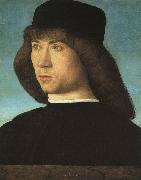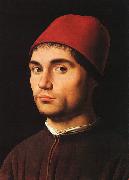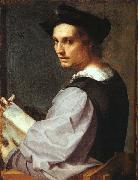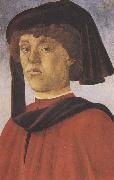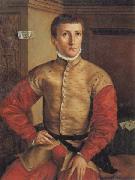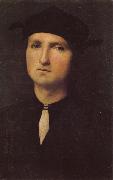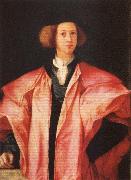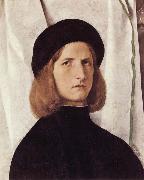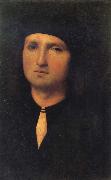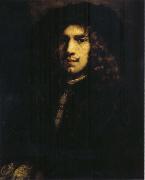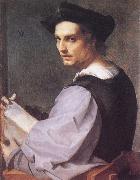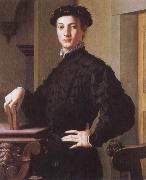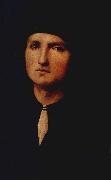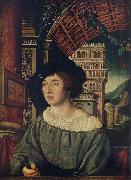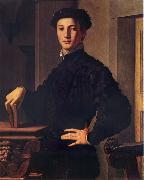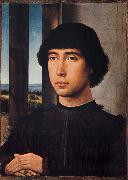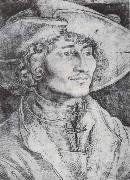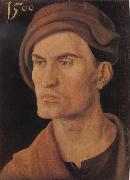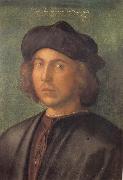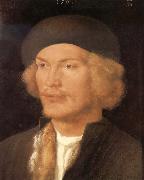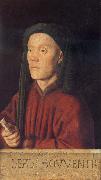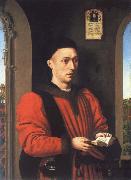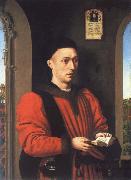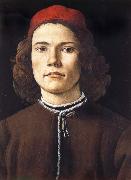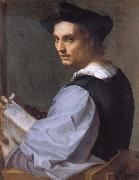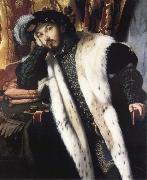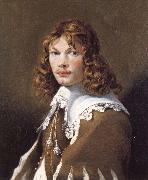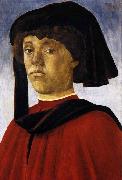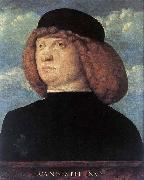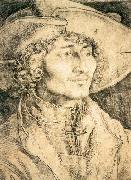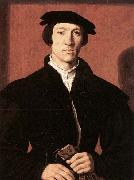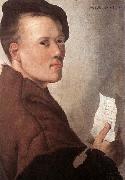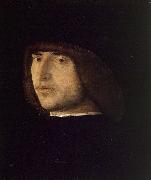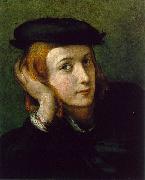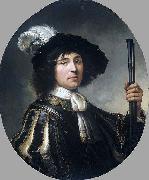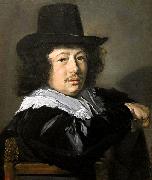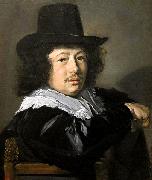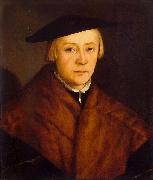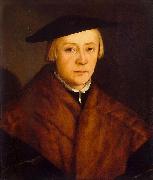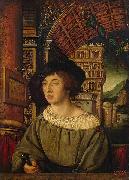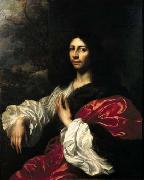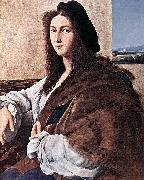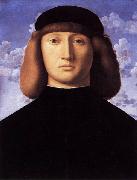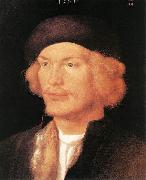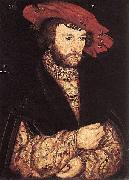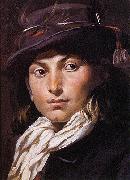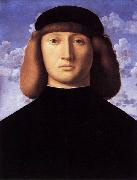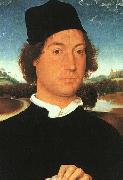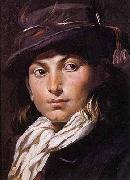Wholesale Oil Painting No Minimum |
|||||||||||
|
|
|||||||||||

|
|||||||||||
|
|
|
||||||||
Giovanni BelliniItalian High Renaissance Painter, ca.1430-1516 (b ?1431-6; d Venice, 29 Nov 1516). Painter and draughtsman, son of (1) Jacopo Bellini. Although the professional needs of his family background may have encouraged him to specialize at an early date in devotional painting, by the 1480s he had become a leading master in all types of painting practised in 15th-century Venice. Later, towards the end of his long life, he added the new genres of mythological painting and secular allegory to his repertory of subject-matter. His increasing dominance of Venetian art led to an enormous expansion of his workshop after c. 1490; and this provided the training-ground not only for his numerous shop-hands and imitators (generically known as Belliniani) but probably also for a number of major Venetian painters of the next generation. Throughout his career, Giovanni showed an extraordinary capacity for absorbing a wide range of artistic influences, both from within Venetian tradition and from outside. He also oversaw a technical revolution in the art of painting, involving the gradual abandonment of the traditional Italian use of egg tempera in favour of the technique of oil painting pioneered in the Netherlands. It was thanks to Giovanni Bellini that the Venetian school of painting was transformed during the later 15th century from one mainly of local significance to one with an international reputation. He thus set the stage for the triumphs of Venetian painting in the 16th century and for the central contribution that Venice was to make to the history of European art. |
||||||||
|
|
||||||||
Portrait of a Young Man
Portrait of a Young Man Painting ID:: 49 |
National Gallery of Art, Washington DC National Gallery of Art, Washington DC |
|||||||
|
|
||||||||
Antonello da Messina1430-1479 Italian Antonello da Messina Galleries Antonello was born at Messina around 1429-1431, to Giovanni de Antonio Mazonus and Garita (Margherita). He was probably apprenticed in his native city and in Palermo. Around the year 1450, according to a 1524 letter of the Neapolitan humanist Pietro Summonte,[1] he was a pupil of the painter Niccol?? Colantonio at Naples, then one of the most active centres of Renaissance arts. Around 1455 he painted the so-called Sibiu Crucifixion, which was inspired by the Flemish Calvaries and is housed in the Muzeul de Art?? in Bucharest. Of the same years is the Crucifixion in the Royal Museum of Antwerp: his early works shows a marked Flemish influence, which it is now understood he derived from his master Colantonio and from works by Rogier van der Weyden and Jan van Eyck that belonged to Colantonio's patron, Alfonso V of Aragon; his biographer Vasari remarked that Antonello saw at Naples an oil painting by Jan Van Eyck (the "Lomellini Tryptych") belonging to King Alphonso of Aragon; Vasari's further narrative, that being struck by the new method, set out for The Netherlands to acquire a knowledge of the process from Van Eyck's disciples is discredited today. Another theory, supported only by vague documentary evidence, suggests that in 1456 Antonello visited Milan, where he might have met Van Eyck's most accomplished follower, Petrus Christus. Since Antonello was one of the first Italians to master Eyckian oil painting, and Christus was the first Netherlandish painter to learn Italian linear perspective, their meeting is a tempting answer to both questions. But in fact, neither artist is known for certain to have been in Milan at the time. The following year, Antonello received his first commission as an independent artist, a banner for the Confraternit?? di San Michele dei Gerbini in Reggio Calabria. At this date, he was already married, and his son Jacobello had been born. In 1460, his father is mentioned leasing a brigantine to bring back Antonello and his family from Amaltea, a town in Calabria. In that year, Antonello painted the so-called Salting Madonna, in which standard iconography and Flemish style are backed by a greater attention in the volumetric proportions of the figures, probably coming from his knowledge of some works by Piero della Francesca. Also from around 1460 are the two small panels depicting Abraham Served by the Angels and St. Jerome Penitent now in the Museo Nazionale della Magna Grecia in Reggio Calabria. In 1461 his younger brother Giordano entered Antonello's workshop, signing a three-years' contract. Of that year is a Madonna with Child for the Messinese nobleman Giovanni Mirulla, now lost. Between 1465-1470, Antonello finished a Portrait of a Man now at Cefal??. His portraits are noteworthy for his characteristic use of the three-quarter view, typical of the Flemish School, whereas almost all Italian painters adopted the medal profile pose. Antonello travelled to Venice around 1470, to see Giovanni Bellini's paintings. The Palermo Annunciation.In this year he executed his first signed and dated work, the Salvator Mundi. Back at Sicily, Antonello finished the St. Gregory's Polyptych. In 1474, he painted the Annunciation, now in Syracuse, and the St. Jerome in His Study, one of his most famous paintings. The following year he began his regular sojourn in Venice, where he remained until the fall of 1476. His works of this period begin to show a greater attention to the human figure, regarding both anatomy and expressivity, according to the influence of Piero della Francesca and Bellini. His most famous pictures dating from this period include the Condottiero (Louvre, illustration), the San Cassiano Altarpiece and the St. Sebastian (see selected works for details). The San Cassiano Altarpiece was especially influential on Venetian painters, as it was one of the first of the large compositions in the sacra conversazione format which was perfected by Giovanni Bellini (Antonello's surviving work in Vienna is only a fragment of the much larger original). Antonello returned briefly to Sicily in 1476, where he painted the famous Virgin Annunciate, now in the Palazzo Abatellis at Palermo. He died at Messina in 1479: his testament dates from February of that year, and he is documented as no longer alive two months later. Some of his last works remained unfinished, but were completed by his son Jacobello. |
||||||||
|
|
||||||||
|
|
Portrait of a Young Man
Portrait of a Young Man Painting ID:: 2881 |
1465
National Gallery, London 1465 National Gallery, London |
||||||
|
|
||||||||
Andrea del Sartob.July 16, 1486, Florence d.Sept. 28, 1530, Florence Italian Andrea del Sarto Galleries Andrea del Sarto (1486 ?C 1531) was an Italian painter from Florence, whose career flourished during the High Renaissance and early-Mannerism. Though highly regarded by his contemporaries as an artist "senza errori" (i.e., faultless), he is overshadowed now by equally talented contemporaries like Raphael. Andrea fell in love with Lucrezia (del Fede), wife of a hatter named Carlo, of Recanati; the hatter dying opportunely, Andrea married her on 26 December 1512. She has come down to us in many a picture of her lover-husband, who constantly painted her as a Madonna and otherwise; even in painting other women he made them resemble Lucrezia. She was less gently handled by Giorgio Vasari, a pupil of Andrea, who describes her as faithless, jealous, and vixenish with the apprentices; her offstage character permeates Robert Browning's poem-monologue "Andrea del Sarto called the 'faultless painter'" (1855) . He dwelt in Florence throughout the memorable siege of 1529, which was soon followed by an infectious pestilence. He caught the malady, struggled against it with little or no tending from his wife, who held aloof, and he died, no one knowing much about it at the moment, on 22 January 1531, at the comparatively early age of forty-three. He was buried unceremoniously in the church of the Servites. His wife survived her husband by forty years. A number of paintings are considered to be self-portraits. One is in the National Gallery, London, an admirable half-figure, purchased in 1862. Another is at Alnwick Castle, a young man about twenty years, with his elbow on a table. Another youthful portrait is in the Uffizi Gallery, and the Pitti Palace contains more than one. |
||||||||
|
|
||||||||
|
|
Portrait of a Young Man
Portrait of a Young Man Painting ID:: 3245 |
1517
National Gallery, London 1517 National Gallery, London |
||||||
|
|
||||||||
Sandro BotticelliItalian Early Renaissance Painter, 1445-1510 Italian painter and draughtsman. In his lifetime he was one of the most esteemed painters in Italy, enjoying the patronage of the leading families of Florence, in particular the Medici and their banking clients. He was summoned to take part in the decoration of the Sistine Chapel in Rome, was highly commended by diplomatic agents to Ludovico Sforza in Milan and Isabella d Este in Mantua and also received enthusiastic praise from the famous mathematician Luca Pacioli and the humanist poet Ugolino Verino. By the time of his death, however, Botticelli s reputation was already waning. He was overshadowed first by the advent of what Vasari called the maniera devota, a new style by Perugino, Francesco Francia and the young Raphael, whose new and humanly affective sentiment, infused atmospheric effects and sweet colourism took Italy by storm; he was then eclipsed with the establishment immediately afterwards of the High Renaissance style, which Vasari called the modern manner, in the paintings of Michelangelo and the mature works of Raphael in the Vatican. From that time his name virtually disappeared until the reassessment of his reputation that gathered momentum in the 1890s |
||||||||
|
|
||||||||
|
|
Portrait of a Young Man
Portrait of a Young Man Painting ID:: 26841 |
1470--1473
Florence,Palazzo Pitti,Galleria Palatina. 1470--1473 Florence,Palazzo Pitti,Galleria Palatina. |
||||||
|
|
||||||||
PENCZ, GeorgGerman Northern Renaissance Painter, ca.1500-1550 German painter, draughtsman and engraver. He arrived in Nuremberg in 1523 and entered Albrecht D?rer's workshop. On 12 January 1525 he was imprisoned with the brothers Barthel Beham and Sebald Beham and charged with disseminating the radical views of Thomas M?ntzer (c. 1490-1525) concerning religion and government. The council banished them from Nuremberg, but, after an appeal and intercession by Graf Albrecht von Mansfeld, Pencz was sent to nearby Windsheim, and on 16 November all three were pardoned, though placed under orders regarding their future behaviour. |
||||||||
|
|
||||||||
|
|
Portrait of a Young Man
Portrait of a Young Man Painting ID:: 28833 |
mk65
Oil on panel
35 13/16x27 9/16in
mk65 Oil on panel 35 13/16x27 9/16in |
||||||
|
|
||||||||
PERUGINO, PietroItalian painter, Umbrian school (b. 1450, Citta della Pieve, d. 1523, Perugia). Italian painter and draughtsman. He was active in Perugia, Florence and Rome in the late 15th century and early 16th. Although he is now known mainly as the teacher of Raphael, he made a significant contribution to the development of painting from the style of the Early Renaissance to the High Renaissance. The compositional model he introduced, combining the Florentine figural style with an Umbrian use of structure and space, |
||||||||
|
|
||||||||
|
|
Portrait of a Young Man
Portrait of a Young Man Painting ID:: 29288 |
mk65
Oil on canvas
transferred from panel
16x10"
mk65 Oil on canvas transferred from panel 16x10" |
||||||
|
|
||||||||
PontormoItalian Mannerist Painter, 1494-ca.1556 Italian painter and draughtsman. He was the leading painter in mid-16th-century Florence and one of the most original and extraordinary of Mannerist artists. His eccentric personality, solitary and slow working habits and capricious attitude towards his patrons are described by Vasari; his own diary, which covers the years 1554-6, further reveals a character with neurotic and secretive aspects. Pontormo enjoyed the protection of the Medici family throughout his career but, unlike Agnolo Bronzino and Giorgio Vasari, did not become court painter. His subjective portrait style did not lend itself to the state portrait. He produced few mythological works and after 1540 devoted himself almost exclusively to religious subjects. His drawings, mainly figure studies in red and black chalk, are among the highest expressions of the great Florentine tradition of draughtsmanship; close to 400 survive, forming arguably the most important body of drawings by a Mannerist painter. |
||||||||
|
|
||||||||
|
|
Portrait of a young Man
Portrait of a young Man Painting ID:: 33233 |
mk83
c.1522
Oil on wood
85x61cm
mk83 c.1522 Oil on wood 85x61cm |
||||||
|
|
||||||||
Lorenzo LottoItalian 1480-1556 Lorenzo Lotto Galleries In this last period of his life, Lorenzo Lotto would frequently move from town to town, searching for patrons and commissions. In 1532 he went to Treviso. Next he spent about seven years in the Marches (Ancona, Macerata en Jesi), returning to Venice in 1540. He moved again to Treviso in 1542 and back to Venice in 1545. Finally he went back to Ancona in 1549. This was a productive period in his life, during which he painted several altarpieces and portraits : Santa Lucia before the Judge, 1532, Jesi, Pinacoteca comunale The Sleeping Child Jesus with the Madonna, St. Joseph and St. Catherine of Alexandria, 1533, Bergamo, Accademia Carrara Portrait of a Lady as Lucretia, 1533, National Gallery, London. Holy Family with SS Jerome, Anna and Joachim, 1534, Firenze, Uffizi Holy Family, ca 1537, Paris, Louvre Portrait of a Young Man, Firenze, Uffizi Crucifixion, Monte San Giusto, Church of S Maria in Telusiano Rosary Madonna, 1539, Cingoli, Church of San Nicolo Portrait of a Man, 1541, Ottawa, National Gallery of Canada Bust of a Bearded Man, 1541, ascribed, San Francisco, Fine Arts Museum The Alms of Saint Anthony, 1542, Venezia, church SS Giovanni e Paolo Madonna and four Saints, 1546, Venezia, Church of San Giacomo dell??Orio Portrait of fra?? Gregorio Belo da Vicenza, 1548,New York, Metropolitan Museum Assumption, 1550, Ancona, church San Francesco alle Scale The Crossbowman, 1551, Rome, Pinacoteca Capitolina Portrait of an Old man, ascribed, ca 1552, Saint Petersburg, Ermitage Presentation in the Temple, 1555, Loreto, Palazzo Apostolico A Venetian woman in the guise of Lucretia (1533).At the end of his life it was becoming increasingly difficult for him to earn a living. Furthermore, in 1550 one of his works had an unsuccessful auction in Ancona. As recorded in his personal account book, this deeply disillusioned him. As he had always been a deeply religious man, he entered in 1552 the Holy Sanctuary at Loreto, becoming a lay brother. During that time he decorated the basilica of S Maria and painted a Presentation in the Temple for the Palazzo Apostolico in Loreto. He died in 1556 and was buried, at his request, in a Dominican habit. Giorgio Vasari included Lotto's biography in the third volume of his book Vite. Lorenzo Lotto himself left many letters and a detailed notebook (Libro di spese diverse, 1538-1556), giving a certain insight in his life and work. Among the many painters he influenced are likely Giovanni Busi |
||||||||
|
|
||||||||
|
|
Portrait of a Young Man
Portrait of a Young Man Painting ID:: 33465 |
mk86
c.1506-1508
Oil on canvas
53.3x42.3cm
Vienna,Kunsthistorisches Museum
mk86 c.1506-1508 Oil on canvas 53.3x42.3cm Vienna,Kunsthistorisches Museum |
||||||
|
|
||||||||
PERUGINO, PietroItalian painter, Umbrian school (b. 1450, Citta della Pieve, d. 1523, Perugia). Italian painter and draughtsman. He was active in Perugia, Florence and Rome in the late 15th century and early 16th. Although he is now known mainly as the teacher of Raphael, he made a significant contribution to the development of painting from the style of the Early Renaissance to the High Renaissance. The compositional model he introduced, combining the Florentine figural style with an Umbrian use of structure and space, |
||||||||
|
|
||||||||
|
|
Portrait of a Young Man
Portrait of a Young Man Painting ID:: 34257 |
mk91
Mid-1490s
Oil on canvas
transferred from a panel
40.5x25.5
mk91 Mid-1490s Oil on canvas transferred from a panel 40.5x25.5 |
||||||
|
|
||||||||
REMBRANDT Harmenszoon van RijnBorn 1606, Died 1669.One of the great Dutch painters and printmakers of the 17th century, Rembrandt van Rijn is best known for his expressive use of light and shadow (also called chiaroscuro) in his many portraits. Raised in Leiden, he studied with Pieter Lastman (1583-1633) in Amsterdam, then returned to Leiden around 1625 and set up shop as a teacher and portrait artist. Sometime between 1630 and 1632 Rembrandt relocated to Amsterdam, where he spent the rest of his career. Though he had his detractors (some of whom considered him coarse and "low born"), Rembrandt was successful and famous during his lifetime, though he fell on financial hard times in his later years. He was a master printer and produced hundreds of group portraits and historical paintings, including The Anatomy Lesson of Dr. Tulp (1632), The Military Company of Captain Frans Banning Cocq (1642) and Aristotle with a Bust of Homer (1653). His portraits -- including a lifelong trail of intriguing and rather frank self-portraits -- reveal his interest in psychological study and continue to be admired as landmarks in Western art. The Military Company of Captain Frans Banning Cocq is also known as "The Night Watch" because it was thought the painting depicted a nighttime scene. When the painting was cleaned in the 1940s it became obvious that it depicted a daytime scene... He married Saskia van Ulenburgh (also Uylenburgh) in 1634. |
||||||||
|
|
||||||||
|
|
Portrait of a Young Man
Portrait of a Young Man Painting ID:: 34511 |
mk93
1658
Oil on canvas
29 1/2x23 7/8in
Louvre,Paris
mk93 1658 Oil on canvas 29 1/2x23 7/8in Louvre,Paris |
||||||
|
|
||||||||
Andrea del Sartob.July 16, 1486, Florence d.Sept. 28, 1530, Florence Italian Andrea del Sarto Galleries Andrea del Sarto (1486 ?C 1531) was an Italian painter from Florence, whose career flourished during the High Renaissance and early-Mannerism. Though highly regarded by his contemporaries as an artist "senza errori" (i.e., faultless), he is overshadowed now by equally talented contemporaries like Raphael. Andrea fell in love with Lucrezia (del Fede), wife of a hatter named Carlo, of Recanati; the hatter dying opportunely, Andrea married her on 26 December 1512. She has come down to us in many a picture of her lover-husband, who constantly painted her as a Madonna and otherwise; even in painting other women he made them resemble Lucrezia. She was less gently handled by Giorgio Vasari, a pupil of Andrea, who describes her as faithless, jealous, and vixenish with the apprentices; her offstage character permeates Robert Browning's poem-monologue "Andrea del Sarto called the 'faultless painter'" (1855) . He dwelt in Florence throughout the memorable siege of 1529, which was soon followed by an infectious pestilence. He caught the malady, struggled against it with little or no tending from his wife, who held aloof, and he died, no one knowing much about it at the moment, on 22 January 1531, at the comparatively early age of forty-three. He was buried unceremoniously in the church of the Servites. His wife survived her husband by forty years. A number of paintings are considered to be self-portraits. One is in the National Gallery, London, an admirable half-figure, purchased in 1862. Another is at Alnwick Castle, a young man about twenty years, with his elbow on a table. Another youthful portrait is in the Uffizi Gallery, and the Pitti Palace contains more than one. |
||||||||
|
|
||||||||
|
|
Portrait of a Young Man
Portrait of a Young Man Painting ID:: 40313 |
mk156
c.1517
Oil on linen
72.4x57.2cm
National Gallery
London
mk156 c.1517 Oil on linen 72.4x57.2cm National Gallery London |
||||||
|
|
||||||||
Agnolo BronzinoItalian Mannerist Painter, 1503-1572 Agnolo di Cosimo (November 17, 1503 ?C November 23,1572), usually known as Il Bronzino, or Agnolo Bronzino (mistaken attempts also have been made in the past to assert his name was Agnolo Tori and even Angelo (Agnolo) Allori), was an Italian Mannerist painter from Florence. The origin of his nickname, Bronzino is unknown, but could derive from his dark complexion, or from that he gave many of his portrait subjects. It has been claimed by some that he had dark skin as a symptom of Addison disease, a condition which affects the adrenal glands and often causes excessive pigmentation of the skin. |
||||||||
|
|
||||||||
|
|
Portrait of a Young Man
Portrait of a Young Man Painting ID:: 40348 |
mk156
c.1530
Oil on wood
95.6x74.9cm
mk156 c.1530 Oil on wood 95.6x74.9cm |
||||||
|
|
||||||||
Pietro PeruginoItalian 1450-1523 Pietro Perugino Galleries Italian painter and draughtsman. He was active in Perugia, Florence and Rome in the late 15th century and early 16th. Although he is now known mainly as the teacher of Raphael, he made a significant contribution to the development of painting from the style of the Early Renaissance to the High Renaissance. The compositional model he introduced, combining the Florentine figural style with an Umbrian use of structure and space, was taken up by Raphael and became widely influential throughout Europe. |
||||||||
|
|
||||||||
|
|
Portrait of a young man
Portrait of a young man Painting ID:: 40974 |
mk159
Mid-1490s
Oil on canvas
transferred from panel
40.5x25.5cm
mk159 Mid-1490s Oil on canvas transferred from panel 40.5x25.5cm |
||||||
|
|
||||||||
Ambrosius Holbein1494-1519 German Ambrosius Holbein Gallery Ambrosius Holbein (c. 1494 ?C c. 1519) was a German and Swiss artist in painting, drawing and printmaking. He was the elder brother, by about three years, of Hans Holbein the Younger and like his brother was born in Augsburg (which today is in Bavaria, but then was a free imperial city), a center of art, culture and trade at that time. His father Hans Holbein the Elder was a pioneer and leader in the transformation of German art from the Gothic to the Renaissance style. In his studio both his sons, Ambrosius and Hans, received their first painting lessons as well as the an introduction to the crafts of the goldsmith, jeweller and printmaker. Portrait of a Boy with Blond Hair, 1516, BaselIn 1515 Ambrosius lived in the Swiss town of Stein am Rhein, where he helped a Schaffhausen painter named Thomas Schmid with the murals in the main hall of the St George monastery. The next year saw Ambrosius, as well as his brother Hans, in Basel, where he initially worked as a journeyman in Hans Herbster??s studio. In 1517 he was enrolled in a register of the Basel painters' guild and in 1518 he was naturalized as a citizen there. The Portrait of a Boy with Blond Hair and its companion, the Portrait of a Boy with Brown Hair, are among Ambrosius?? best works of this period. Both are nowadays in the Basel Kunstmuseum. Ambrosius Holbein ranks among the most important of Basel??s illustrators and prominent „small formats?? artists. |
||||||||
|
|
||||||||
|
|
Portrait of a young man
Portrait of a young man Painting ID:: 40983 |
mk159
1518
OIl on panel
44x32.5cm
mk159 1518 OIl on panel 44x32.5cm |
||||||
|
|
||||||||
BRONZINO, AgnoloItalian Mannerist Painter, 1503-1572 Italian painter and poet. He dominated Florentine painting from the 1530s to the 1560s. He was court artist to Cosimo I de' Medici, and his sophisticated style and extraordinary technical ability were ideally suited to the needs and ideals of his ducal patron. He was a leading decorator, and his religious subjects and mythological scenes epitomize the grace of the high maniera style. |
||||||||
|
|
||||||||
|
|
Portrait of a young man
Portrait of a young man Painting ID:: 41279 |
mk161
Oil on wood
mk161 Oil on wood |
||||||
|
|
||||||||
Hans MemlingNetherlandish Northern Renaissance Painter, ca.1435-1494 Born in Seligenstadt, near Frankfurt in the Middle Rhein region, it is believed that Memling served his apprenticeship at Mainz or Cologne, and later worked in the Netherlands under Rogier van der Weyden (c. 1455?C1460). He then went to Bruges around 1465. There is an apocryphical story that he was a wounded at the Battle of Nancy, sheltered and cured by the Hospitallers at Bruges, and that to show his gratitude he refused payment for a picture he had painted for them. Memling did indeed paint for the Hospitallers, but he painted several pictures for them, in 1479 and 1480, and it is likely that he was known to his patrons of St John, prior to the Battle of Nancy. Memling is connected with military operations only in a distant sense. His name appears on a list of subscribers to the loan which was raised by Maximilian I of Austria, to defend against hostilities towards France in 1480. In 1477, when he was incorrectly claimed to have been killed, he was under contract to create an altarpiece for the gild-chapel of the booksellers of Bruges. This altarpiece, under the name of the Seven Griefs of Mary, is now in the Gallery of Turin. It is one of the fine creations of his more mature period. It is not inferior in any way to those of 1479 in the hospital of St. John, which for their part are hardly less interesting as illustrative of the master's power than The Last Judgment which can be found since the 1470s in the St. Mary's Church, Gda??sk. Critical opinion has been unanimous in assigning this altarpiece to Memling. This affirms that Memling was a resident and a skilled artist at Bruges in 1473; for the Last Judgment was undoubtedly painted and sold to a merchant at Bruges, who shipped it there on board of a vessel bound to the Mediterranean, which was captured by Danzig privateer Paul Beneke in that very year. This purchase of his pictures by an agent of the Medici demonstrates that he had a considerable reputation. |
||||||||
|
|
||||||||
|
|
Portrait of a young man
Portrait of a young man Painting ID:: 41324 |
mk161
Oil on panel
15x11 mk161 Oil on panel 15x11 |
||||||
|
|
||||||||
Albrecht Durerb.May 21, 1471, Imperial Free City of Nernberg [Germany] d.April 6, 1528, Nernberg Albrecht Durer (May 21, 1471 ?C April 6, 1528) was a German painter, printmaker and theorist from Nuremberg. His still-famous works include the Apocalypse woodcuts, Knight, Death, and the Devil (1513), Saint Jerome in his Study (1514) and Melencolia I (1514), which has been the subject of extensive analysis and interpretation. His watercolours mark him as one of the first European landscape artists, while his ambitious woodcuts revolutionized the potential of that medium. D??rer introduction of classical motifs into Northern art, through his knowledge of Italian artists and German humanists, have secured his reputation as one of the most important figures of the Northern Renaissance. This is reinforced by his theoretical treatise which involve principles of mathematics, perspective and ideal proportions. His prints established his reputation across Europe when he was still in his twenties, and he has been conventionally regarded as the greatest artist of the Renaissance in Northern Europe ever since. |
||||||||
|
|
||||||||
|
|
Portrait of a Young man
Portrait of a Young man Painting ID:: 42297 |
mk168
378x271mm
London
British Museum
mk168 378x271mm London British Museum |
||||||
|
|
||||||||
Albrecht Durerb.May 21, 1471, Imperial Free City of Nernberg [Germany] d.April 6, 1528, Nernberg Albrecht Durer (May 21, 1471 ?C April 6, 1528) was a German painter, printmaker and theorist from Nuremberg. His still-famous works include the Apocalypse woodcuts, Knight, Death, and the Devil (1513), Saint Jerome in his Study (1514) and Melencolia I (1514), which has been the subject of extensive analysis and interpretation. His watercolours mark him as one of the first European landscape artists, while his ambitious woodcuts revolutionized the potential of that medium. D??rer introduction of classical motifs into Northern art, through his knowledge of Italian artists and German humanists, have secured his reputation as one of the most important figures of the Northern Renaissance. This is reinforced by his theoretical treatise which involve principles of mathematics, perspective and ideal proportions. His prints established his reputation across Europe when he was still in his twenties, and he has been conventionally regarded as the greatest artist of the Renaissance in Northern Europe ever since. |
||||||||
|
|
||||||||
|
|
Portrait of a young man
Portrait of a young man Painting ID:: 42394 |
mk168
29x21cm
Original panel
mk168 29x21cm Original panel |
||||||
|
|
||||||||
Albrecht Durerb.May 21, 1471, Imperial Free City of Nernberg [Germany] d.April 6, 1528, Nernberg Albrecht Durer (May 21, 1471 ?C April 6, 1528) was a German painter, printmaker and theorist from Nuremberg. His still-famous works include the Apocalypse woodcuts, Knight, Death, and the Devil (1513), Saint Jerome in his Study (1514) and Melencolia I (1514), which has been the subject of extensive analysis and interpretation. His watercolours mark him as one of the first European landscape artists, while his ambitious woodcuts revolutionized the potential of that medium. D??rer introduction of classical motifs into Northern art, through his knowledge of Italian artists and German humanists, have secured his reputation as one of the most important figures of the Northern Renaissance. This is reinforced by his theoretical treatise which involve principles of mathematics, perspective and ideal proportions. His prints established his reputation across Europe when he was still in his twenties, and he has been conventionally regarded as the greatest artist of the Renaissance in Northern Europe ever since. |
||||||||
|
|
||||||||
|
|
Portrait of a young man
Portrait of a young man Painting ID:: 42399 |
mk168
1506
Oil on wood
46x35cm
mk168 1506 Oil on wood 46x35cm |
||||||
|
|
||||||||
Albrecht Durerb.May 21, 1471, Imperial Free City of Nernberg [Germany] d.April 6, 1528, Nernberg Albrecht Durer (May 21, 1471 ?C April 6, 1528) was a German painter, printmaker and theorist from Nuremberg. His still-famous works include the Apocalypse woodcuts, Knight, Death, and the Devil (1513), Saint Jerome in his Study (1514) and Melencolia I (1514), which has been the subject of extensive analysis and interpretation. His watercolours mark him as one of the first European landscape artists, while his ambitious woodcuts revolutionized the potential of that medium. D??rer introduction of classical motifs into Northern art, through his knowledge of Italian artists and German humanists, have secured his reputation as one of the most important figures of the Northern Renaissance. This is reinforced by his theoretical treatise which involve principles of mathematics, perspective and ideal proportions. His prints established his reputation across Europe when he was still in his twenties, and he has been conventionally regarded as the greatest artist of the Renaissance in Northern Europe ever since. |
||||||||
|
|
||||||||
|
|
Portrait of a Young Man
Portrait of a Young Man Painting ID:: 42401 |
mk168
1507
Oil on linden wood
35x29cm
mk168 1507 Oil on linden wood 35x29cm |
||||||
|
|
||||||||
Jan Van Eyck1395-1441 Flemish Jan Van Eyck Locations Painter and illuminator, brother of Hubert van Eyck. According to a 16th-century Ghent tradition, represented by van Vaernewijck and Lucas d Heere, Jan trained with his brother Hubert. Pietro Summonte assertion (1524) that he began work as an illuminator is supported by the fine technique and small scale of most of Jan works, by manuscript precedents for certain of his motifs, and by his payment in 1439 for initials in a book (untraced) for Philip the Good, Duke of Burgundy. Jan is first documented in The Hague in August 1422 as an established artist with an assistant and the title of Master, working for John III, Count of Holland (John of Bavaria; reg 1419-25), who evidently discovered the artist while he was bishop (1389-1417) of the principality of Liege. Jan became the court official painter and was paid, with a second assistant when the work increased in 1423, continuously, probably until the count death in January 1425. |
||||||||
|
|
||||||||
|
|
Portrait of a Young Man
Portrait of a Young Man Painting ID:: 42842 |
mk170
Oil on oak
33.3x18.9cm
mk170 Oil on oak 33.3x18.9cm |
||||||
|
|
||||||||
Petrus ChristusFlemish 1415-1473 Petrus Christus Locations South Netherlandish painter. His known artistic career began in Bruges on 6 July 1444 when, as the Poorterboek (citizens register) for that day reveals, he purchased his citizenship ... in order to be a painter. Town records show that he and his wife became members of the Confraternity of the Dry Tree c. 1462; that in 1463 he and another painter, Pieter Nachtegale, were paid for the construction of a Tree of Jesse (destr.) and for the cost of assistants employed on the day of the religious procession in which it was used; and that on 19 March 1472 he served as a representative of the painters guild in a dispute with another painter, Jehan de Hervy the elder ( fl 1472-1507). These and a few other scattered references comprise the existing documentation for Christusa life and work. |
||||||||
|
|
||||||||
|
|
Portrait of a young Man
Portrait of a young Man Painting ID:: 42843 |
mk170
1455-1460
oil on oak
35.4x26cm
mk170 1455-1460 oil on oak 35.4x26cm |
||||||
|
|
||||||||
Petrus ChristusFlemish 1415-1473 Petrus Christus Locations South Netherlandish painter. His known artistic career began in Bruges on 6 July 1444 when, as the Poorterboek (citizens register) for that day reveals, he purchased his citizenship ... in order to be a painter. Town records show that he and his wife became members of the Confraternity of the Dry Tree c. 1462; that in 1463 he and another painter, Pieter Nachtegale, were paid for the construction of a Tree of Jesse (destr.) and for the cost of assistants employed on the day of the religious procession in which it was used; and that on 19 March 1472 he served as a representative of the painters guild in a dispute with another painter, Jehan de Hervy the elder ( fl 1472-1507). These and a few other scattered references comprise the existing documentation for Christusa life and work. |
||||||||
|
|
||||||||
|
|
Portrait of a young man
Portrait of a young man Painting ID:: 42845 |
mk170
1455-1460
Oil on oak
35.4x26cm
mk170 1455-1460 Oil on oak 35.4x26cm |
||||||
|
|
||||||||
Sandro BotticelliItalian Early Renaissance Painter, 1445-1510 Italian painter and draughtsman. In his lifetime he was one of the most esteemed painters in Italy, enjoying the patronage of the leading families of Florence, in particular the Medici and their banking clients. He was summoned to take part in the decoration of the Sistine Chapel in Rome, was highly commended by diplomatic agents to Ludovico Sforza in Milan and Isabella d Este in Mantua and also received enthusiastic praise from the famous mathematician Luca Pacioli and the humanist poet Ugolino Verino. By the time of his death, however, Botticelli s reputation was already waning. He was overshadowed first by the advent of what Vasari called the maniera devota, a new style by Perugino, Francesco Francia and the young Raphael, whose new and humanly affective sentiment, infused atmospheric effects and sweet colourism took Italy by storm; he was then eclipsed with the establishment immediately afterwards of the High Renaissance style, which Vasari called the modern manner, in the paintings of Michelangelo and the mature works of Raphael in the Vatican. From that time his name virtually disappeared until the reassessment of his reputation that gathered momentum in the 1890s |
||||||||
|
|
||||||||
|
|
Portrait of a young man
Portrait of a young man Painting ID:: 42877 |
mk170
1480-1485
Tempera and oil on wood
37.5x28.3cm
mk170 1480-1485 Tempera and oil on wood 37.5x28.3cm |
||||||
|
|
||||||||
Andrea del Sartob.July 16, 1486, Florence d.Sept. 28, 1530, Florence Italian Andrea del Sarto Galleries Andrea del Sarto (1486 ?C 1531) was an Italian painter from Florence, whose career flourished during the High Renaissance and early-Mannerism. Though highly regarded by his contemporaries as an artist "senza errori" (i.e., faultless), he is overshadowed now by equally talented contemporaries like Raphael. Andrea fell in love with Lucrezia (del Fede), wife of a hatter named Carlo, of Recanati; the hatter dying opportunely, Andrea married her on 26 December 1512. She has come down to us in many a picture of her lover-husband, who constantly painted her as a Madonna and otherwise; even in painting other women he made them resemble Lucrezia. She was less gently handled by Giorgio Vasari, a pupil of Andrea, who describes her as faithless, jealous, and vixenish with the apprentices; her offstage character permeates Robert Browning's poem-monologue "Andrea del Sarto called the 'faultless painter'" (1855) . He dwelt in Florence throughout the memorable siege of 1529, which was soon followed by an infectious pestilence. He caught the malady, struggled against it with little or no tending from his wife, who held aloof, and he died, no one knowing much about it at the moment, on 22 January 1531, at the comparatively early age of forty-three. He was buried unceremoniously in the church of the Servites. His wife survived her husband by forty years. A number of paintings are considered to be self-portraits. One is in the National Gallery, London, an admirable half-figure, purchased in 1862. Another is at Alnwick Castle, a young man about twenty years, with his elbow on a table. Another youthful portrait is in the Uffizi Gallery, and the Pitti Palace contains more than one. |
||||||||
|
|
||||||||
|
|
Portrait of a Young Man
Portrait of a Young Man Painting ID:: 43001 |
mk 170
1517-1517
Oil on linen
71x54cm
mk 170 1517-1517 Oil on linen 71x54cm |
||||||
|
|
||||||||
MORETTO da BresciaItalian High Renaissance Painter, 1498-1554 Italian painter. Together with Romanino and Giovanni Girolamo Savoldo, he was one of the most distinguished painters of Brescia of the 16th century. Influenced by both Lombard verism and contemporary Venetian painters, Moretto created an individual style in which realism and Venetian light and colour were perfectly balanced. He was personally involved in the local movement of Roman Catholic reform, and this is reflected in his direct, solemn and often moving depictions of religious subjects. |
||||||||
|
|
||||||||
|
|
Portrait of a Young Man
Portrait of a Young Man Painting ID:: 43053 |
mk170
1542
Oil on canvas
114x94.4cm
mk170 1542 Oil on canvas 114x94.4cm |
||||||
|
|
||||||||
Karel Dujardin1621-1678 Dutch Karel Dujardin Locations Dujardin was born in Amsterdam in 1640. After training with Nicolaes Berchem, he went to Italy when young, and became a member of the Society of Painters at Rome, among whom, he was known as Barba di Becco. In Rome, his works met with general approbation. According to some sources, on his way back to his native country, he contracted considerable debts at Lyon, to free himself from which, he married his old and rich landlady. He went with her to Amsterdam, where his pictures were valued very highly. He soon secretly left his home in that city, probably from dislike of his wife, and went back to Rome in 1675, where he was welcomed by his old friends and admirers, and lived at great expense. After a vist to Tangier he went to Venice, where he died in 1678. Most of his paintings are cabinet paintings of Italianate landscapes and or with farm animals and peasants. His landscapes have spirit and harmony, his figures expression, and his colour the brilliancy which distinguishes his school. His paintings are rare and command a high price. He also published fifty-two etchings of simiar subjects, with great spirit and ease. He painted a single, fine, portrait (probably a self-portrait), and a pair of Baroque religious paintings on the life of St Paul, probably commissioned, as they lie well outside his normal style. One of these, and the portrait, are in the National Gallery, London |
||||||||
|
|
||||||||
|
|
Portrait of a Young Man
Portrait of a Young Man Painting ID:: 43149 |
mk170
circa 1655
Oil on canvas
62x52.5cm
mk170 circa 1655 Oil on canvas 62x52.5cm |
||||||
|
|
||||||||
BOTTICELLI, SandroItalian Early Renaissance Painter, 1445-1510 Alessandro di Mariano di Vanni Filipepi, better known as Sandro Botticelli or Il Botticello ("The Little Barrel"; March 1, 1445 ?C May 17, 1510) was an Italian painter of the Florentine school during the Early Renaissance (Quattrocento). Less than a hundred years later, this movement, under the patronage of Lorenzo de' Medici, was characterized by Giorgio Vasari as a "golden age", a thought, suitably enough, he expressed at the head of his Vita of Botticelli. His posthumous reputation suffered until the late 19th century; since then his work has been seen to represent the linear grace of Early Renaissance painting, and The Birth of Venus and Primavera rank now among the most familiar masterpieces of Florentine art. Details of Botticelli's life are sparse, but we know that he became an apprentice when he was about fourteen years old, which would indicate that he received a fuller education than did other Renaissance artists. Vasari reported that he was initially trained as a goldsmith by his brother Antonio. Probably by 1462 he was apprenticed to Fra Filippo Lippi; many of his early works have been attributed to the elder master, and attributions continue to be uncertain. Influenced also by the monumentality of Masaccio's painting, it was from Lippi that Botticelli learned a more intimate and detailed manner. As recently discovered, during this time, Botticelli could have traveled to Hungary, participating in the creation of a fresco in Esztergom, ordered in the workshop of Fra Filippo Lippi by Vitez J??nos, then archbishop of Hungary. By 1470 Botticelli had his own workshop. Even at this early date his work was characterized by a conception of the figure as if seen in low relief, drawn with clear contours, and minimizing strong contrasts of light and shadow which would indicate fully modeled forms. |
||||||||
|
|
||||||||
|
|
Portrait of a Young Man
Portrait of a Young Man Painting ID:: 62940 |
1469 Tempera on panel, 51 x 33,7 cm Galleria Palatina (Palazzo Pitti), Florence Botticelli painted this portrait in a three quarter view like a silhouette against a pale blue sky. The young man, who is looking very slightly down towards the observer, is wearing a red jerkin and the characteristic headgear of the Florentine Quattrocento, the mazzocchio. The hat band which is casually draped across his shoulder provides an artistic frame for the young man's face. The sitter of the portrait is probably Gianlorenzo de' Medici, and it could very well be Botticelli's first commissioned work, and from the hair and the clothes, the portrait must date from no later than 1469. Artist: BOTTICELLI, Sandro Painting Title: Portrait of a Young Man , 1451-1500 Painting Style: Italian , , portrait 1469 Tempera on panel, 51 x 33,7 cm Galleria Palatina (Palazzo Pitti), Florence Botticelli painted this portrait in a three quarter view like a silhouette against a pale blue sky. The young man, who is looking very slightly down towards the observer, is wearing a red jerkin and the characteristic headgear of the Florentine Quattrocento, the mazzocchio. The hat band which is casually draped across his shoulder provides an artistic frame for the young man's face. The sitter of the portrait is probably Gianlorenzo de' Medici, and it could very well be Botticelli's first commissioned work, and from the hair and the clothes, the portrait must date from no later than 1469. Artist: BOTTICELLI, Sandro Painting Title: Portrait of a Young Man , 1451-1500 Painting Style: Italian , , portrait |
||||||
|
|
||||||||
Giovanni BelliniItalian High Renaissance Painter, ca.1430-1516 (b ?1431-6; d Venice, 29 Nov 1516). Painter and draughtsman, son of (1) Jacopo Bellini. Although the professional needs of his family background may have encouraged him to specialize at an early date in devotional painting, by the 1480s he had become a leading master in all types of painting practised in 15th-century Venice. Later, towards the end of his long life, he added the new genres of mythological painting and secular allegory to his repertory of subject-matter. His increasing dominance of Venetian art led to an enormous expansion of his workshop after c. 1490; and this provided the training-ground not only for his numerous shop-hands and imitators (generically known as Belliniani) but probably also for a number of major Venetian painters of the next generation. Throughout his career, Giovanni showed an extraordinary capacity for absorbing a wide range of artistic influences, both from within Venetian tradition and from outside. He also oversaw a technical revolution in the art of painting, involving the gradual abandonment of the traditional Italian use of egg tempera in favour of the technique of oil painting pioneered in the Netherlands. It was thanks to Giovanni Bellini that the Venetian school of painting was transformed during the later 15th century from one mainly of local significance to one with an international reputation. He thus set the stage for the triumphs of Venetian painting in the 16th century and for the central contribution that Venice was to make to the history of European art. |
||||||||
|
|
||||||||
|
|
Portrait of a Young Man
Portrait of a Young Man Painting ID:: 63527 |
1500 Oil on wood, 31 x 26 cm Galleria degli Uffizi, Florence This work, along with the Portrait of a Young Man conserved in the Galleria Capitolina, is recorded in the Inventories of 1753 as a self portrait, and as such it continues to be regarded, even though this supposition lacks any scientific foundation. The portrait is highly distinctive, the face having a mellow, moulded quality accentuated by its halo of soft curls and the round clouds which fill the sky in the background.Artist:BELLINI, Giovanni Title: Portrait of a Young Man Painted in 1451-1500 , Italian - - painting : portrait 1500 Oil on wood, 31 x 26 cm Galleria degli Uffizi, Florence This work, along with the Portrait of a Young Man conserved in the Galleria Capitolina, is recorded in the Inventories of 1753 as a self portrait, and as such it continues to be regarded, even though this supposition lacks any scientific foundation. The portrait is highly distinctive, the face having a mellow, moulded quality accentuated by its halo of soft curls and the round clouds which fill the sky in the background.Artist:BELLINI, Giovanni Title: Portrait of a Young Man Painted in 1451-1500 , Italian - - painting : portrait |
||||||
|
|
||||||||
Albrecht Durerb.May 21, 1471, Imperial Free City of Nernberg [Germany] d.April 6, 1528, Nernberg Albrecht Durer (May 21, 1471 ?C April 6, 1528) was a German painter, printmaker and theorist from Nuremberg. His still-famous works include the Apocalypse woodcuts, Knight, Death, and the Devil (1513), Saint Jerome in his Study (1514) and Melencolia I (1514), which has been the subject of extensive analysis and interpretation. His watercolours mark him as one of the first European landscape artists, while his ambitious woodcuts revolutionized the potential of that medium. D??rer introduction of classical motifs into Northern art, through his knowledge of Italian artists and German humanists, have secured his reputation as one of the most important figures of the Northern Renaissance. This is reinforced by his theoretical treatise which involve principles of mathematics, perspective and ideal proportions. His prints established his reputation across Europe when he was still in his twenties, and he has been conventionally regarded as the greatest artist of the Renaissance in Northern Europe ever since. |
||||||||
|
|
||||||||
|
|
Portrait of a Young Man
Portrait of a Young Man Painting ID:: 63592 |
1521 Charcoal drawing on paper, 378 x 211 mm British Museum, London One of the portraits drawn sweepingly with charcoal during the journey to the Netherlands is this portrait of a young man whose identity has not yet been established. The scene is tightly framed, the bust of the portrayed man is moved right into the foreground, causing the wide cap to be cut off by the edges of the picture. His fashionable hat shows off to advantage the character head with the broad cheek bones and sensuous lips, which are depicted with great precision and delicacy.Artist:D?RER, Albrecht Title: Portrait of a Young Man Painted in 1501-1550 , German - - graphics : portrait 1521 Charcoal drawing on paper, 378 x 211 mm British Museum, London One of the portraits drawn sweepingly with charcoal during the journey to the Netherlands is this portrait of a young man whose identity has not yet been established. The scene is tightly framed, the bust of the portrayed man is moved right into the foreground, causing the wide cap to be cut off by the edges of the picture. His fashionable hat shows off to advantage the character head with the broad cheek bones and sensuous lips, which are depicted with great precision and delicacy.Artist:D?RER, Albrecht Title: Portrait of a Young Man Painted in 1501-1550 , German - - graphics : portrait |
||||||
|
|
||||||||
|
|
||||||||
|
|
Portrait of a Young Man
Portrait of a Young Man Painting ID:: 64143 |
1530-40 Oil on panel, 69 x 52 cm Koninklijk Museum voor Schone Kunsten, Antwerp , Artist: UNKNOWN MASTER, Flemish , Portrait of a Young Man , 1501-1550 , Flemish , painting , portrait 1530-40 Oil on panel, 69 x 52 cm Koninklijk Museum voor Schone Kunsten, Antwerp , Artist: UNKNOWN MASTER, Flemish , Portrait of a Young Man , 1501-1550 , Flemish , painting , portrait |
||||||
|
|
||||||||
|
|
||||||||
|
|
Portrait of a Young Man
Portrait of a Young Man Painting ID:: 64146 |
46 x 32 cm Koninklijk Museum voor Schone Kunsten, Antwerp This portrait of a young man aged 19 provides us with a lively document of the 16th century. , Artist: UNKNOWN MASTER, Dutch , Portrait of a Young Man , 1501-1550 , Dutch , painting , portrait 46 x 32 cm Koninklijk Museum voor Schone Kunsten, Antwerp This portrait of a young man aged 19 provides us with a lively document of the 16th century. , Artist: UNKNOWN MASTER, Dutch , Portrait of a Young Man , 1501-1550 , Dutch , painting , portrait |
||||||
|
|
||||||||
Gentile BelliniItalian c1429-1507 Gentile Bellini Gallery (b Venice, ?1429; d Venice, 23 Feb 1507). Painter and draughtsman, son of (1) Jacopo Bellini. An official painter of the Venetian Republic, he was a dominant figure in Venetian art for several decades in the latter half of the 15th century, known particularly for portraits and large narrative paintings in which the city and its inhabitants are depicted in great detail. |
||||||||
|
|
||||||||
|
|
Portrait of a Young Man
Portrait of a Young Man Painting ID:: 73861 |
Date between 1478(1478) and 1482(1482)
Medium tempera with oil glazes on panel
Dimensions 26.7 X 21.3 cm (10.51 X 8.39 in)
cyf Date between 1478(1478) and 1482(1482) Medium tempera with oil glazes on panel Dimensions 26.7 X 21.3 cm (10.51 X 8.39 in) cyf |
||||||
|
|
||||||||
CorreggioItalian 1489-1534 Correggio Locations Italian painter and draughtsman. Apart from his Venetian contemporaries, he was the most important northern Italian painter of the first half of the 16th century. His best-known works are the illusionistic frescoes in the domes of S Giovanni Evangelista and the cathedral in Parma, where he worked from 1520 to 1530. The combination of technical virtuosity and dramatic excitement in these works ensured their importance for later generations of artists. His altarpieces of the same period are equally original and ally intimacy of feeling with an ecstatic quality that seems to anticipate the Baroque. In his paintings of mythological subjects, especially those executed after his return to Correggio around 1530, he created images whose sensuality and abandon have been seen as foreshadowing the Rococo. Vasari wrote that Correggio was timid and virtuous, that family responsibilities made him miserly and that he died from a fever after walking in the sun. He left no letters and, apart from Vasari account, nothing is known of his character or personality beyond what can be deduced from his works. The story that he owned a manuscript of Bonaventura Berlinghieri Geographia, as well as his use of a latinized form of Allegri (Laetus), and his naming of his son after the humanist Pomponius Laetus, all suggest that he was an educated man by the standards of painters in this period. The intelligence of his paintings supports this claim. Relatively unknown in his lifetime, Correggio was to have an enormous posthumous reputation. He was revered by Federico Barocci and the Carracci, and throughout the 17th and 18th centuries his reputation rivalled that of Raphael. |
||||||||
|
|
||||||||
|
|
Portrait of a Young Man
Portrait of a Young Man Painting ID:: 77273 |
c. 1525, oil on wood, 59 x 44 cm (23 1/4 x 17 1/4 in.), Mus??e du Louvre, Paris
Date ca. 1525(1525)
cyf c. 1525, oil on wood, 59 x 44 cm (23 1/4 x 17 1/4 in.), Mus??e du Louvre, Paris Date ca. 1525(1525) cyf |
||||||
|
|
||||||||
Aelbert Cuyp1620-1691 Dutch Aelbert Cuyp Locations Painter and draughtsman, son of Jacob Cuyp. One of the most important landscape painters of 17th-century Netherlands, he combined a wide range of sources and influences, most notably in the application of lighting effects derived from Italianate painting to typical Dutch subjects. Such traditional themes as townscapes, winter scenes, cattle pieces and equestrian portraits were stylistically transformed and given new grandeur. Aelbert was virtually unknown outside his native town, and his influence in the 17th century was negligible. He became popular in the late 18th century, especially in England. |
||||||||
|
|
||||||||
|
|
Portrait of a young man
Portrait of a young man Painting ID:: 78691 |
between 1650(1650) and 1655(1655)
Oil on panel
82 x 70 cm (32.3 x 27.6 in)
cjr between 1650(1650) and 1655(1655) Oil on panel 82 x 70 cm (32.3 x 27.6 in) cjr |
||||||
|
|
||||||||
Frans Hals1580-1666 Frans Hals Galleries In the field of group portraiture his work is equalled only by that of Rembrandt. Hals's portraits, both individual and group, have an immediacy and brilliance that bring his sitters to life in a way previously unknown in the Netherlands. This effect, achieved by strong Baroque designs and the innovative use of loose brushstrokes to depict light on form, was not to the taste of critics in the 18th century and the early 19th, when his work was characterized as lazy and unfinished. However, with the rise of Realism and, later, Impressionism, Hals was hailed as a modern painter before his time. Since then his works have always been popular. |
||||||||
|
|
||||||||
|
|
Portrait of a Young Man
Portrait of a Young Man Painting ID:: 78846 |
Date January 30, 2011
cyf Date January 30, 2011 cyf |
||||||
|
|
||||||||
Dirck HalsDutch 1591-1656 Dirck Hals Galleries Dirck Hals (born at Haarlem, 1591-1656) was a Dutch painter of festivals and ballroom scenes. He was influenced by his elder brother Frans Hals. |
||||||||
|
|
||||||||
|
|
Portrait of a Young Man
Portrait of a Young Man Painting ID:: 79523 |
1646 - 1648, Frans Hals) housed inside the National Gallery of Art in Washington, D.C.
cyf 1646 - 1648, Frans Hals) housed inside the National Gallery of Art in Washington, D.C. cyf |
||||||
|
|
||||||||
Aelbert Cuyp1620-1691 Dutch Aelbert Cuyp Locations Painter and draughtsman, son of Jacob Cuyp. One of the most important landscape painters of 17th-century Netherlands, he combined a wide range of sources and influences, most notably in the application of lighting effects derived from Italianate painting to typical Dutch subjects. Such traditional themes as townscapes, winter scenes, cattle pieces and equestrian portraits were stylistically transformed and given new grandeur. Aelbert was virtually unknown outside his native town, and his influence in the 17th century was negligible. He became popular in the late 18th century, especially in England. |
||||||||
|
|
||||||||
|
|
Portrait of a young man
Portrait of a young man Painting ID:: 81766 |
Medium Oil on panel
Dimensions 82 x 70 cm (32.3 x 27.6 in)
cyf Medium Oil on panel Dimensions 82 x 70 cm (32.3 x 27.6 in) cyf |
||||||
|
|
||||||||
Alessandro Allori(May 3, 1535 - September 22, 1607) was an Italian portrait painter of the late Mannerist Florentine school. Born in Florence, in 1540, after the death of his father, he was brought up and trained in art by a close friend, often referred to as his 'uncle', the mannerist painter Agnolo Bronzino, whose name he sometimes assumed in his pictures. In some ways, Allori is the last of the line of prominent Florentine painters, of generally undiluted Tuscan artistic heritage: Andrea del Sarto worked with Fra Bartolomeo (as well as Leonardo Da Vinci), Pontormo briefly worked under Andrea, and trained Bronzino, who trained Allori. Subsequent generations in the city would be strongly influenced by the tide of Baroque styles pre-eminent in other parts of Italy. |
||||||||
|
|
||||||||
|
|
Portrait of a Young Man
Portrait of a Young Man Painting ID:: 82584 |
Date second half of 16th century
Medium Oil on canvas transferred from wood
Dimensions Height: 117 cm (46.1 in). Width: 87.5 cm (34.4 in).
cjr Date second half of 16th century Medium Oil on canvas transferred from wood Dimensions Height: 117 cm (46.1 in). Width: 87.5 cm (34.4 in). cjr |
||||||
|
|
||||||||
Christoph Amberger(c. 1505 --1562) was a painter of Nernberg in the 16th century, a disciple of Hans Holbein, his principal work being the history of Joseph in twelve pictures. Amberger travelled to Northern Italy and Venice between 1525 and 1527. He died in Augsburg. |
||||||||
|
|
||||||||
|
|
Portrait of a Young Man
Portrait of a Young Man Painting ID:: 82961 |
1548(1548)
Medium Oil on wood
cyf 1548(1548) Medium Oil on wood cyf |
||||||
|
|
||||||||
AMBERGER, ChristophGerman Painter, ca.1500-1562 German painter and draughtsman. His family came from the Upper Palatinate. He served his apprenticeship in Augsburg, probably with Leonhard Beck, whose daughter Barbara he married. He became a master on 15 May 1530 but rarely signed his work. He was in northern Italy and Venice c. 1525-7. His full-length pendant portraits of a husband and wife (both 1525; Vienna, Ksthist. Mus.) show Venetian influence, and the portrait of Anton Welser (1527; priv. col., see 1980 exh. cat., p. 98) is in the Italian style. According to Sandrart, during the Imperial Diet of 1530 in Augsburg Amberger painted a portrait of Emperor Charles V to the Emperor's satisfaction, but the surviving work (Berlin, Gem?ldegal.) dates from 1532, based on the age given. In the decades that followed, Amberger was the favourite portrait painter of ambitious merchant families, such as the Fugger, who belonged to guilds but were connected with the nobility by family or marriage ties. |
||||||||
|
|
||||||||
|
|
Portrait of a Young Man
Portrait of a Young Man Painting ID:: 83164 |
after 1548(1548)
Medium Oil on wood
cyf after 1548(1548) Medium Oil on wood cyf |
||||||
|
|
||||||||
Ambrosius Holbein1494-1519 German Ambrosius Holbein Gallery Ambrosius Holbein (c. 1494 ?C c. 1519) was a German and Swiss artist in painting, drawing and printmaking. He was the elder brother, by about three years, of Hans Holbein the Younger and like his brother was born in Augsburg (which today is in Bavaria, but then was a free imperial city), a center of art, culture and trade at that time. His father Hans Holbein the Elder was a pioneer and leader in the transformation of German art from the Gothic to the Renaissance style. In his studio both his sons, Ambrosius and Hans, received their first painting lessons as well as the an introduction to the crafts of the goldsmith, jeweller and printmaker. Portrait of a Boy with Blond Hair, 1516, BaselIn 1515 Ambrosius lived in the Swiss town of Stein am Rhein, where he helped a Schaffhausen painter named Thomas Schmid with the murals in the main hall of the St George monastery. The next year saw Ambrosius, as well as his brother Hans, in Basel, where he initially worked as a journeyman in Hans Herbster??s studio. In 1517 he was enrolled in a register of the Basel painters' guild and in 1518 he was naturalized as a citizen there. The Portrait of a Boy with Blond Hair and its companion, the Portrait of a Boy with Brown Hair, are among Ambrosius?? best works of this period. Both are nowadays in the Basel Kunstmuseum. Ambrosius Holbein ranks among the most important of Basel??s illustrators and prominent „small formats?? artists. |
||||||||
|
|
||||||||
|
|
Portrait of a Young Man
Portrait of a Young Man Painting ID:: 83285 |
1518(1518)
Medium Oil on wood
cyf 1518(1518) Medium Oil on wood cyf |
||||||
|
|
||||||||
Jan lievensDutch Baroque Era Painter, 1607-1674 Dutch painter, draughtsman and printmaker. His work has often suffered by comparison with that of Rembrandt, with whom he was closely associated from 1625 to 1631. Yet Lievens's early work is equal to that of Rembrandt, although in later years he turned more towards a somewhat facile rendering of the international Baroque style favoured by his noble patrons, thus never fully realizing his early promise. |
||||||||
|
|
||||||||
|
|
Portrait of a Young Man
Portrait of a Young Man Painting ID:: 83515 |
1660-1665
Medium Oil on canvas
cyf 1660-1665 Medium Oil on canvas cyf |
||||||
|
|
||||||||
RAFFAELLO SanzioItalian High Renaissance Painter, 1483-1520 Italian painter and architect. As a member of Perugino's workshop, he established his mastery by 17 and began receiving important commissions. In 1504 he moved to Florence, where he executed many of his famous Madonnas; his unity of composition and suppression of inessentials is evident in The Madonna of the Goldfinch (c. 1506). Though influenced by Leonardo da Vinci's chiaroscuro and sfumato, his figure types were his own creation, with round, gentle faces that reveal human sentiments raised to a sublime serenity. In 1508 he was summoned to Rome to decorate a suite of papal chambers in the Vatican. The frescoes in the Stanza della Segnatura are probably his greatest work; the most famous, The School of Athens (1510 C 11), is a complex and magnificently ordered allegory of secular knowledge showing Greek philosophers in an architectural setting. The Madonnas he painted in Rome show him turning away from his earlier work's serenity to emphasize movement and grandeur, partly under Michelangelo's High Renaissance influence. The Sistine Madonna (1513) shows the richness of colour and new boldness of compositional invention typical of his Roman period. He became the most important portraitist in Rome, designed 10 large tapestries to hang in the Sistine Chapel, designed a church and a chapel, assumed the direction of work on St. Peter's Basilica at the death of Donato Bramante, |
||||||||
|
|
||||||||
|
|
Portrait of a Young Man
Portrait of a Young Man Painting ID:: 83844 |
1514 Alternate: c. 1509-11
Medium Oil on parqueted board
Dimensions 59 x 75 cm (23.2 x 29.5 in)
cyf 1514 Alternate: c. 1509-11 Medium Oil on parqueted board Dimensions 59 x 75 cm (23.2 x 29.5 in) cyf |
||||||
|
|
||||||||
Vincenzo CatenaItalian c1480-1531 Vincenzo Catena Location Italian painter. His paintings represent the perpetuation of the style of Giovanni Bellini into the second quarter of the 16th century. He made few concessions to the modern style that was being introduced to Venice by Titian, Palma Vecchio, Pordenone and others in the same period. This archaicizing tendency was shared by several minor Bellinesque painters of the period, including Pietro degli Ingannati, Pietro Duia, Francesco Bissolo, Vittore Belliniano and the Master of the Incredulity of St Thomas. Catena, together with Marco Basaiti, with whose works Catena are sometimes confused, can be considered the most accomplished of these. Despite the fact that he counted several humanists in his circle, the extant repertory of his subjects is limited to religious themes, mainly Marian and including three altarpieces, and to male portraits. The latter, as Vasari observed, include several of his finest works. |
||||||||
|
|
||||||||
|
|
Portrait of a Young Man
Portrait of a Young Man Painting ID:: 84582 |
Date between 1505(1505) and 1510(1510)
Medium Oil on wood
Dimensions Height: 31 cm (12.2 in). Width: 24 cm (9.4 in).
cjr Date between 1505(1505) and 1510(1510) Medium Oil on wood Dimensions Height: 31 cm (12.2 in). Width: 24 cm (9.4 in). cjr |
||||||
|
|
||||||||
Albrecht Durerb.May 21, 1471, Imperial Free City of Nernberg [Germany] d.April 6, 1528, Nernberg Albrecht Durer (May 21, 1471 ?C April 6, 1528) was a German painter, printmaker and theorist from Nuremberg. His still-famous works include the Apocalypse woodcuts, Knight, Death, and the Devil (1513), Saint Jerome in his Study (1514) and Melencolia I (1514), which has been the subject of extensive analysis and interpretation. His watercolours mark him as one of the first European landscape artists, while his ambitious woodcuts revolutionized the potential of that medium. D??rer introduction of classical motifs into Northern art, through his knowledge of Italian artists and German humanists, have secured his reputation as one of the most important figures of the Northern Renaissance. This is reinforced by his theoretical treatise which involve principles of mathematics, perspective and ideal proportions. His prints established his reputation across Europe when he was still in his twenties, and he has been conventionally regarded as the greatest artist of the Renaissance in Northern Europe ever since. |
||||||||
|
|
||||||||
|
|
Portrait of a Young Man
Portrait of a Young Man Painting ID:: 84738 |
Date 1507(1507)
Medium Oil on linden
Dimensions Height: 35 cm (13.8 in). Width: 29 cm (11.4 in).
cjr Date 1507(1507) Medium Oil on linden Dimensions Height: 35 cm (13.8 in). Width: 29 cm (11.4 in). cjr |
||||||
|
|
||||||||
Lucas CranachKronach 1472-Weimar 1553 German painter and engraver. The son of a painter, he settled in Wittenberg c.1504 and was court painter successively under three electors of Saxony. There he maintained a flourishing workshop and was twice burgomaster. Cranach was a close friend of Martin Luther, whose doctrine he upheld in numerous paintings and woodcuts, and he has been called the painter of the Reformation. He was a rapid and prolific painter, and the work turned out by his studio is uneven in quality. Naïve and fanciful, often awkward in draftsmanship, it has, nonetheless, freshness and originality and a warm, rich palette. His portraits are particularly successful. Among his best-known works are Repose in Egypt (Gemäldgalerie, Staatliche Mus., Berlin-Dahlem); Judgment of Paris (Staatliche Kunsthalle, Karlsruhe); Adam and Eve (Courtauld Inst., London); and Crucifixion (Weimar). The latter contains figures of Luther and Cranach. His many famous protraits include those of Elector John Frederick and Self-Portrait (Uffizi). Cranach was also an accomplished miniaturist. He produced a few copperplates and designs for woodcuts. His son and pupil Lucas Cranach, the Younger, |
||||||||
|
|
||||||||
|
|
Portrait of a Young Man
Portrait of a Young Man Painting ID:: 85545 |
Date first half of 16th century
Medium Oil on wood
Dimensions Height: 30.5 cm (12 in). Width: 23 cm (9.1 in).
cjr Date first half of 16th century Medium Oil on wood Dimensions Height: 30.5 cm (12 in). Width: 23 cm (9.1 in). cjr |
||||||
|
|
||||||||
Jan Van Eyck1395-1441 Flemish Jan Van Eyck Locations Painter and illuminator, brother of Hubert van Eyck. According to a 16th-century Ghent tradition, represented by van Vaernewijck and Lucas d Heere, Jan trained with his brother Hubert. Pietro Summonte assertion (1524) that he began work as an illuminator is supported by the fine technique and small scale of most of Jan works, by manuscript precedents for certain of his motifs, and by his payment in 1439 for initials in a book (untraced) for Philip the Good, Duke of Burgundy. Jan is first documented in The Hague in August 1422 as an established artist with an assistant and the title of Master, working for John III, Count of Holland (John of Bavaria; reg 1419-25), who evidently discovered the artist while he was bishop (1389-1417) of the principality of Liege. Jan became the court official painter and was paid, with a second assistant when the work increased in 1423, continuously, probably until the count death in January 1425. |
||||||||
|
|
||||||||
|
|
Portrait of a Young Man
Portrait of a Young Man Painting ID:: 86643 |
Date 1432(1432)
Medium Oil on wood
Dimensions Height: 34.5 cm (13.6 in). Width: 19 cm (7.5 in).
cjr Date 1432(1432) Medium Oil on wood Dimensions Height: 34.5 cm (13.6 in). Width: 19 cm (7.5 in). cjr |
||||||
|
|
||||||||
Rodolfo Amoedo(born in Salvador, Bahia on December 11, 1857; died in Rio de Janeiro on May 31, 1941) was a Brazilian history painter. He began his career as an artist in 1873 as a student of Victor Meirelles. In 1878 he won the first prize at the Brazilian Academy, which allowed him to travel to Paris, where he lived from 1879 to 1887 studying at the École des Beaux Arts. He was a pupil of Alexandre Cabanel and also worked with Paul-Jacques-Aime Baudry. He was a professor and later director of the Brazilian Academy, renamed School of Fine Arts ou Escola Nacional de Belas Artes at the fall of the Brazilian Empire. His students include Eliseu Visconti. He died forgotten and so poor his friends had to help the widow pay for his funeral. His paintings still hang at the National Museum Museu Nacional de Belas Artes in Rio de Janeiro. |
||||||||
|
|
||||||||
|
|
Portrait of a young man
Portrait of a young man Painting ID:: 88134 |
Oil on canvas
Dimensions 41 x 29.7 cm (16.1 x 11.7 in)
cyf Oil on canvas Dimensions 41 x 29.7 cm (16.1 x 11.7 in) cyf |
||||||
|
|
||||||||
Vincenzo CatenaItalian c1480-1531 Vincenzo Catena Location Italian painter. His paintings represent the perpetuation of the style of Giovanni Bellini into the second quarter of the 16th century. He made few concessions to the modern style that was being introduced to Venice by Titian, Palma Vecchio, Pordenone and others in the same period. This archaicizing tendency was shared by several minor Bellinesque painters of the period, including Pietro degli Ingannati, Pietro Duia, Francesco Bissolo, Vittore Belliniano and the Master of the Incredulity of St Thomas. Catena, together with Marco Basaiti, with whose works Catena are sometimes confused, can be considered the most accomplished of these. Despite the fact that he counted several humanists in his circle, the extant repertory of his subjects is limited to religious themes, mainly Marian and including three altarpieces, and to male portraits. The latter, as Vasari observed, include several of his finest works. |
||||||||
|
|
||||||||
|
|
Portrait of a Young Man
Portrait of a Young Man Painting ID:: 88445 |
between 1505(1505) and 1510(1510)
Medium Oil on wood
cyf between 1505(1505) and 1510(1510) Medium Oil on wood cyf |
||||||
|
|
||||||||
Hans MemlingNetherlandish Northern Renaissance Painter, ca.1435-1494 Born in Seligenstadt, near Frankfurt in the Middle Rhein region, it is believed that Memling served his apprenticeship at Mainz or Cologne, and later worked in the Netherlands under Rogier van der Weyden (c. 1455?C1460). He then went to Bruges around 1465. There is an apocryphical story that he was a wounded at the Battle of Nancy, sheltered and cured by the Hospitallers at Bruges, and that to show his gratitude he refused payment for a picture he had painted for them. Memling did indeed paint for the Hospitallers, but he painted several pictures for them, in 1479 and 1480, and it is likely that he was known to his patrons of St John, prior to the Battle of Nancy. Memling is connected with military operations only in a distant sense. His name appears on a list of subscribers to the loan which was raised by Maximilian I of Austria, to defend against hostilities towards France in 1480. In 1477, when he was incorrectly claimed to have been killed, he was under contract to create an altarpiece for the gild-chapel of the booksellers of Bruges. This altarpiece, under the name of the Seven Griefs of Mary, is now in the Gallery of Turin. It is one of the fine creations of his more mature period. It is not inferior in any way to those of 1479 in the hospital of St. John, which for their part are hardly less interesting as illustrative of the master's power than The Last Judgment which can be found since the 1470s in the St. Mary's Church, Gda??sk. Critical opinion has been unanimous in assigning this altarpiece to Memling. This affirms that Memling was a resident and a skilled artist at Bruges in 1473; for the Last Judgment was undoubtedly painted and sold to a merchant at Bruges, who shipped it there on board of a vessel bound to the Mediterranean, which was captured by Danzig privateer Paul Beneke in that very year. This purchase of his pictures by an agent of the Medici demonstrates that he had a considerable reputation. |
||||||||
|
|
||||||||
|
|
Portrait of a Young Man
Portrait of a Young Man Painting ID:: 90622 |
1480s
Medium oil on panel
Dimensions Height: 33 cm (13 in). Width: 25 cm (9.8 in).
cyf 1480s Medium oil on panel Dimensions Height: 33 cm (13 in). Width: 25 cm (9.8 in). cyf |
||||||
|
|
||||||||
Rodolfo Amoedo(born in Salvador, Bahia on December 11, 1857; died in Rio de Janeiro on May 31, 1941) was a Brazilian history painter. He began his career as an artist in 1873 as a student of Victor Meirelles. In 1878 he won the first prize at the Brazilian Academy, which allowed him to travel to Paris, where he lived from 1879 to 1887 studying at the École des Beaux Arts. He was a pupil of Alexandre Cabanel and also worked with Paul-Jacques-Aime Baudry. He was a professor and later director of the Brazilian Academy, renamed School of Fine Arts ou Escola Nacional de Belas Artes at the fall of the Brazilian Empire. His students include Eliseu Visconti. He died forgotten and so poor his friends had to help the widow pay for his funeral. His paintings still hang at the National Museum Museu Nacional de Belas Artes in Rio de Janeiro. |
||||||||
|
|
||||||||
|
|
Portrait of a young man
Portrait of a young man Painting ID:: 96866 |
oil on canvas
Dimensions 41 X 29.7 cm
cyf oil on canvas Dimensions 41 X 29.7 cm cyf |
||||||
|
|
||||||||
|
Rodolfo Amoedo (born in Salvador, Bahia on December 11, 1857; died in Rio de Janeiro on May 31, 1941) was a Brazilian history painter. He began his career as an artist in 1873 as a student of Victor Meirelles. In 1878 he won the first prize at the Brazilian Academy, which allowed him to travel to Paris, where he lived from 1879 to 1887 studying at the École des Beaux Arts. He was a pupil of Alexandre Cabanel and also worked with Paul-Jacques-Aime Baudry. He was a professor and later director of the Brazilian Academy, renamed School of Fine Arts ou Escola Nacional de Belas Artes at the fall of the Brazilian Empire. His students include Eliseu Visconti. He died forgotten and so poor his friends had to help the widow pay for his funeral. His paintings still hang at the National Museum Museu Nacional de Belas Artes in Rio de Janeiro. Portrait of a young man oil on canvas Dimensions 41 X 29.7 cm cyf |
||||||||
|
|
||||||||
|
Prev Next
|
||||||||
|
|
||||||||
|
Related Paintings to Rodolfo Amoedo :. |
||||||||
|
|
||||||||
|
CONTACT US |
